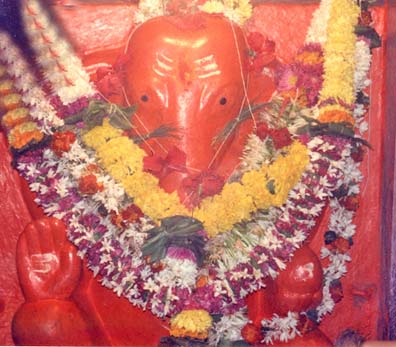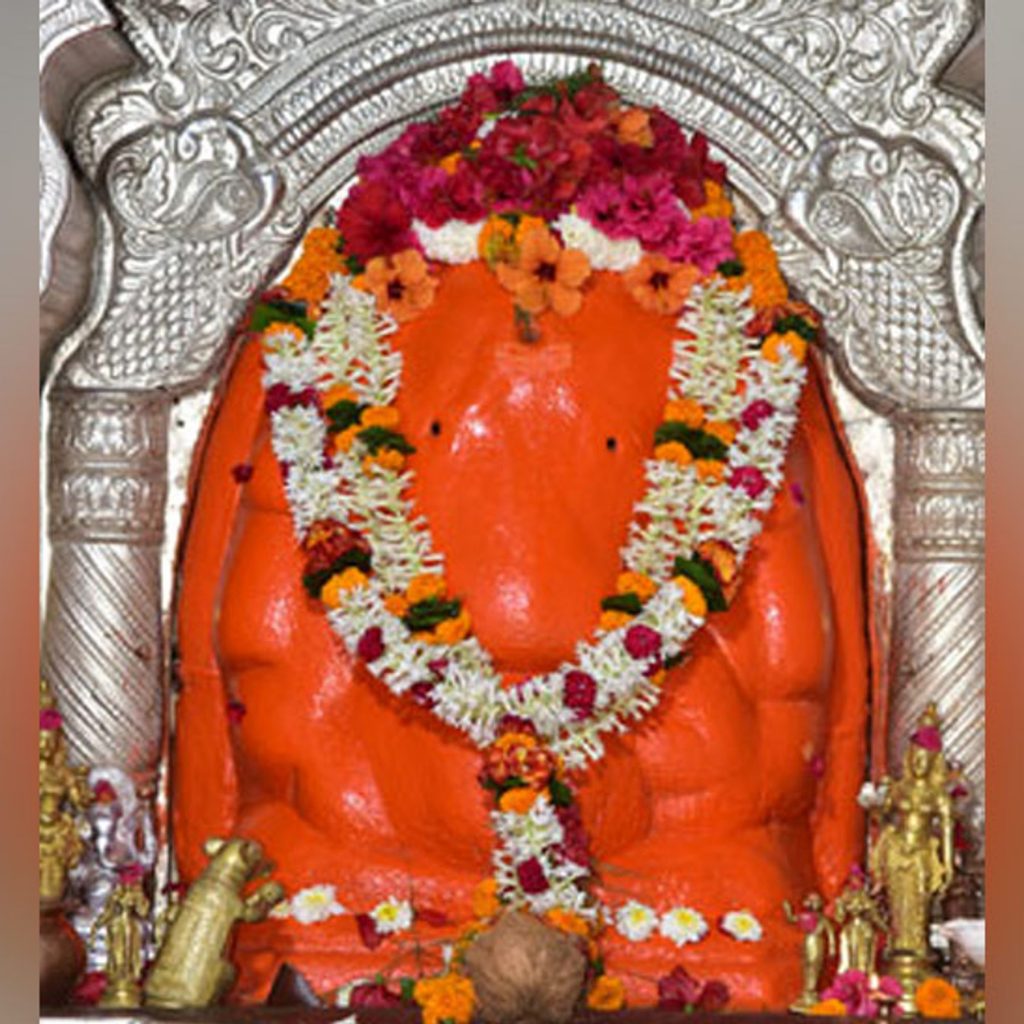Ashtavinayak Darshan: Ashtavinayak Ganpati List, Route
Introduction
Ashtavinayak Darshan is a sacred and spiritual journey that takes pilgrims through the heart of Maharashtra, India. It is a unique pilgrimage that connects devotees with the eight significant temples dedicated to Lord Ganesha, one of the most revered deities in Hinduism.
The Ashtavinayak Yatra is not just a religious expedition; it’s a cultural and historical exploration that offers a deeper understanding of this region’s rich heritage and devotion.
History
The history of the Ashtavinayak Yatra dates back centuries and is intertwined with various legends and historical events. The pilgrimage became popular during the reign of the Peshwas in the 18th century, who were devout followers of Lord Ganesha. The eight temples were constructed and renovated during their rule, further solidifying the pilgrimage’s significance.
- Moreshwar Temple, Morgaon: This temple marks the starting point of the yatra.
- Siddhivinayak Temple, Siddhatek: This temple is atop a hillock and offers breathtaking views.
- Ballaleshwar Temple, Pali: Named after a devoted child, Ballal, this temple is known for its intricate architecture.
- Varadvinayak Temple, Mahad: It’s the only temple where Lord Ganesha’s trunk is positioned to the right.
- Chintamani Temple, Theur: Legend has it that Lord Ganesha retrieved the invaluable jewel Chintamani from a greedy demon.
- Girijatmaj Temple, Lenyadri: This temple is situated within a series of caves.
- Vighneshwar Temple, Ozar: The temple is renowned for its historic architecture.
- Mahaganapati Temple, Ranjangaon: This temple is the yatra’s last and final stop, representing Lord Ganesha’s victorious form.
Ashtavinayak Ganpati List
- Mayureshwar
- Siddhivinayak
- Ballaleshwar
- Varadavinayak
- Chintamani
- Girijatmaj
- Vighneshwar
- Mahaganpati
ashtavinayak darshan map
Below, we try to cover the details of each temple and its convenient routes.
| Temple | Location |
|---|---|
| Mayureshwar Temple | Morgaon, Pune district |
| Siddhivinayak Temple | Siddhatek, Ahmednagar district |
| Ballaleshwar Temple | Pali, Raigad district |
| Varadavinayak Temple | Mahad, Raigad district |
| Chintamani Temple | Theur, Pune district |
| Girijatmaj Temple | Lenyadri, Pune district |
| Vighneshwar Temple | Ozar, Pune district |
| Mahaganpati Temple | Ranjangaon, Pune district |
Ashtavinayak Yatra Route and Guide
1. Moreshwar Temple

Moreshwar is the first vinayak you have to start your Ashtavinayak yatra with and the last one you have to end your yatra with. The temple was built during the Bahamani rule, with black stone and four gates.
The unique thing you will see here is a Nandi sitting in front of the temple. Nandi can be seen in the temples but generally only in the temples of Shiva.
There is a story behind this; it says that this Nandi was being carried to the other Shiva temple only, but the vehicle carrying him broke down in front of the temple.
The Nandi statue is in the same place it is right now. After that, the Nandi could not be removed from its current place until now.
The temple is 55 km from Pune, close to the river Karha in Moregaon. The city gets its name from the Marathi name of the bird peacock – there used to be a lot of peacocks in this town in the old times, and the city is likewise set out looking like a peacock.
Distance and the time to reach the temple from Pune and Mumbai.
Distance from Pune: 70Km
Time to Reach from Pune: 1hr 50 mins
Distance from Mumbai: 217Km
Time to Reach from Pune: 4hr 26 mins
Morgaon Temple Timings
The temple is open from 5 AM till 10 PM.
2. Siddhivinayak Temple

Siddhivinayak of the Siddhatek next after the Morgaon as it is close.
The Siddhivinayak is unique from all the 8 Vinayaks as the trunk of this murti is positioned to the right.
Peshwa’s general Haripant Phadake built the main road towards the temple.
Ahilyabai Holkar built the present temple in the 18th century; the idol of Lord Ganesha is nearly 3 feet tall and 2.5 feet wide.
It is said that the right side trunk of Ganesha is supposed to be very strict for the devotees.
This temple is off the Pune-Solapur highway, 48 km from Srigonda in Ahmednagar district. The temple is located close to the Bhima River. On the Pune-Solapur railroad, the Daund Rail route station is 18 km from here.
Distance from Morgaon: 66KM
Siddhatek Temple Timings
Temple opens at 4:15 AM and closes at 9 PM daily
3. Ballaleshwar Temple

In 1760, Nana Phadanvis reconstructed the original wood temple into a stone temple.
The temple is constructed so that the sun rays fall onto the Lord Ganesha murti at sunrise during the Dakshinayan.
The temple is situated in Pali, off the Mumbai-Pune expressway, around 11 km before Nagothane on the Mumbai-Goa expressway. This is found 30 km toward the southwest of Karjat Railroad Station. Mumbai-Panvel-Khopoli-Pali is 124 km. Pune-Lonavla-Khopoli-Pali is 111 km.
Distance of Siddhivinayak of the Siddhatek: 229KM
Ballaleshwar Temple Timings
Temple is open daily from 5:30 AM to 10 PM.
4. Varadvinayak Temple

The symbol faces the east, has its trunk to the left, and has been in the consistent organization of an oil lamp – said to have continuously started around 1892. There are four elephant icons on four sides of the temple. The corridor is 8 feet by 8 feet. The dome is 25 feet high and is golden at the top. The dome has plans of the cobra.
Here, temples are permitted to personally offer their tribute and appreciation and pay their homage and respect to the icon. They are permitted to play out their requests in the prompt area of this icon.
The temple is three kilometers off the Mumbai-Pune roadway, close to Khopoli (80 km from Pune) and near Mumbai city. Karjat Railroad Station, Karjat, on the Mumbai-Pune rail route, is 24 km from this spot and 6 km from Khopoli.
Distance from Ballaleshwar Pali: 284 KM
Varadavinayak Temple Timings
The temple opens at 6 AM and closes at 9 PM every day.
5. Chintamani Temple

One of the famous stories of the temple is Lord Ganesh is supposed to have gotten back the precious Chintamani Jewel from the cheap Guna for philosopher Kapila at this spot.
After bringing back the Chintamani Jewel, Kapila put it into the Ganesha’s neck, and hence the word comes “Chintamani Vinayak.”
The village was also known as the Kadambanagar in the old times, as this all happened below the Kadamb tree, and the lake behind the tree was also known as the Kadambteertha.
Right now, there is no space to park the vehicle outside the temples, but there is a massive space inside the temple.
The temple is 22 km from Pune, off the Pune-Solapur expressway, and is thus the closest to Pune. The town of Theur sits at the conversion of three significant provincial rivers — Mula, Mutha, and Bhima.
Distance from Varadavinayak: 205KM
Chintamani Temple Timings
The Temple opens at 6 AM and closes at 10 PM daily.
6. Girijatmaj Templei

Be strong and Have enough water while visiting the Girijatmaj Ganesha, as the temple is about 100 feet from the ground in caves.
We can say that the Lenyadri is one of the most beautiful places to visit among the 8 Vinayak.
Even if you want to go outside during the weekends, you can think about this place, as it is beautiful to visit.
There are many trees and you feel nature glims while going upward.
Many small caves have lots of cells in them for meditation. Be aware of the monkeys as they grab your carry bag directly.
The temple is 12 km from Narayangaon and around 94 km from Pune on the Pune-Nashik expressway. The closest railway station is Talegaon. From Junnar, Lenyadri is around 5 km. Shivaneri palace is nearby (5 to 6 km) where Chhatrapati Shivaji Maharaj was born.
Distance from Theur Ganpati: 112KM
Lenyadri Girijatmaj Temple Timings
Visit from sunrise to sunset.
7. Vighneshwar Temple

The mythology of experiences, including this symbol, expresses that Vighnasur, an evil presence, was made by the king of Gods, Indra, to obliterate the request coordinated by King Abhinandan. In any case, the malevolent presence went above and beyond and annihilated all Vedic, strict demonstrations, and Ganesh crushed him to answer individuals’ requests for security.
The temple points toward the east and is encircled by a thick stone wall. One can stroll on the wall. The principal corridor of the temple is 20 feet long, and the inward lobby is 10 feet long. This symbol, confronting the east, has its trunk towards the left and rubies in its eyes.
This temple is situated simply off the Pune-Nashik Highway in Ozhar. High stone walls encase it on all sides, and its zenith is made of gold. The temple is arranged on the banks of the river Kukadi. Employing Mumbai-Thane-Kalyan-Bapsai-Saralgaon-Otur, Ozhar is 182 km.
In Ozar, Bhaktnivas are available to rest for the devotees at a very low cost.
Distance from Girijatmaj Ganpati: 15 KM
Ozar Temple Timings
The Temple is open from 5 AM to 11 PM. However, darshan is closed between 11 AM to 4 PM.
8. Mahaganpati Temple

Ranjangaon Ganpati is one of the Ashtavinayaks celebrating eight occasions of legends connected with Ganesha. This temple Ganpati idol was introduced and given by the “Khollam” family, one of the Gold Smith families in Ranjangaon. As per the set of experiences, the temple was underlying somewhere in the range of ninth and tenth hundreds of years.
There are two guardsmen on the gate, namely “Jay” and “Vijay,” the temple is designed so that during the Dakshinayan, the sun rays fall directly onto Lord Ganesh.
Distance from Ozar Ganpati: 65KM
Ranjangaon Temple Timings
The Temple opens at 5:30 AM and closes at 10 PM.
Ashtavinayak Darshan Yatra
Source: YouTube Kitchen Junction
Important Facts
- The Ashtavinayak Yatra covers approximately 900 kilometers, creating a circular route in Maharashtra.
- The journey is about visiting temples and discovering the region’s local culture, traditions, and culinary delights.
- The pilgrimage can be undertaken by car, bus, or even on foot for the more adventurous souls.
- Each temple has a unique legend and historical significance, making the yatra an educational and spiritual experience.
- The yatra symbolizes unity, attracting people from all walks of life and backgrounds.
Conclusion
The Ashtavinayak Darshan is more than just a pilgrimage; it’s a spiritual and cultural odyssey connecting devotees with Lord Ganesha’s essence and Maharashtra’s rich history. As pilgrims embark on this sacred journey, they seek blessings and discover the beauty of this diverse state. The Yatra is a testament to the unity and devotion of people from all corners of the world who come to experience the magic of Ashtavinayak.




